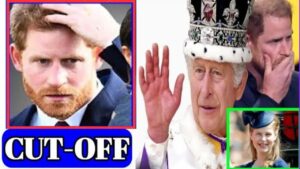Lady Louise Mountbatten-Windsor, the youngest granddaughter of the late Queen Elizabeth II and Prince Philip, is currently immersed in her academic pursuits at the University of St. Andrews, gearing up for her upcoming summer exams.
While she still has a few years left before completing her studies, there is ongoing speculation surrounding her potential role as a working member of the royal family, particularly focusing on the title she may inherit.
The crux of the matter lies in the Letters Patent of 1917, a decree issued by King George V that outlines the entitlement to royal titles within the monarchy.
Initially obscure, these letters have now become a topic of interest, especially in discussions concerning whether Lady Louise could eventually be bestowed with the title of princess.
The Letters Patent of 1917, crafted during the chaos of World War I, stipulated that the offspring and grandchildren of a reigning monarch in the male lineage are eligible to bear the titles of prince or princess, along with the esteemed honorific HRH, denoting his or her royal highness.
However, the application of these regulations has sparked debates surrounding gender equality, as they predominantly favor male descendants over their female counterparts.
Notably, Queen Elizabeth II’s youngest son, Prince Edward, encountered a pivotal juncture in 1999 when he tied the knot with Sophie Rice-Jones.
Following careful deliberation, it was declared that their offspring would not be granted the HRH title, deviating from the conventional interpretation of the Letters Patent.
This decision, made amidst public scrutiny in the aftermath of Princess Diana’s passing, underscored the delicate nature of royal titles and their implications.
Lady Louise Mountbatten-Windsor, the daughter of Prince Edward and Sophie, has been known by her courtesy title of Lady, despite speculations regarding a potential elevation to HRH status.
The controversy surrounding this matter persists, with some proponents asserting that the precedent set by her parents’ choice is definitive.
Nonetheless, as the royal household grapples with a diminishing number of active members due to aging and retirements, there is a mounting anticipation that Lady Louise may be called upon to undertake official royal duties in the foreseeable future.
With Prince Charles advocating for a more streamlined approach to royal engagements, the landscape of royal responsibilities is poised to evolve, potentially reshaping Lady Louise’s role within the monarchy.
As Lady Louise commemorates her 20th birthday, the delicate balance between maintaining privacy and embracing her royal lineage remains a prominent theme, encapsulating the intricate dynamics of the modern monarchy.
While uncertainties loom over her future, Lady Louise’s immediate focus remains steadfast on her academic endeavors, shielded from the public gaze by her deliberate choice to retain the title of Lady.
What are your thoughts on this intriguing royal development?
Feel free to share your opinions in the comments section below.
As we await further developments, the unfolding narrative surrounding Lady Louise Mountbatten-Windsor’s potential royal trajectory continues to captivate royal enthusiasts worldwide.
Stay tuned for more updates on this compelling saga.
